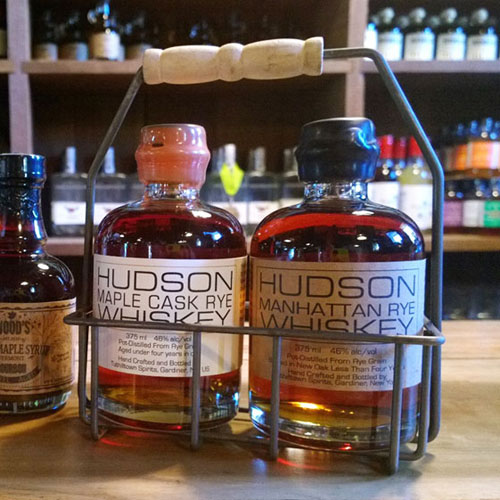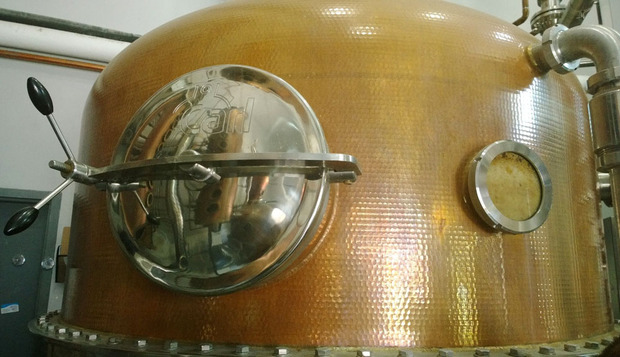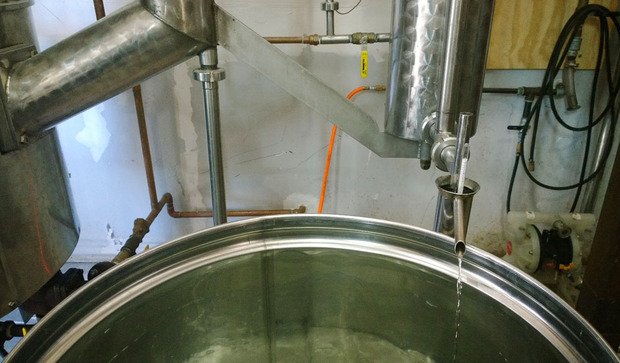Hudson Whiskey’s Maple Cask Rye
A barrel swap with syrup-makers led to the family-operated distillery releasing a maple rye

This is no liqueur, or a syrupy sweet, gooey-thick blend of whiskey and maple products. With a heady nose of rye, a full spiced taste and a maple inflection that’s far more than grace notes, Hudson Whiskey‘s small-batch, handmade Maple Cask Rye is a rare, successful iteration of a maple or honey alcohol. Disregard your preconceptions of flavored alcohol because this is not one—and there are two stories behind it.
Just off the road in Gardiner, New York—part of New York’s Hudson Valley—a 240-year-old gristmill drew the attention of rock-climber Ralph Erenzo. The former New Yorker had a view in mind to turn the surrounding land into a rock-climbing ranch, but was met with complaints from his neighbors over the potential for noise and traffic. With the property already zoned for agricultural use, Erenzo began to explore opportunities in a world that had never crossed his path before. He began operating the property’s Tuthilltown Gristmill to produce matzo flour for a Jewish bakery in Brooklyn and, when he felt limited by the options of flour production, Erenzo also began to produce alcohol on the compound. There were already 128 wineries in New York, but a new distillery law had just been put into place. During the winter months of 2003, while living on the property, Erenzo began experimenting. He fermented cider in the basement and distilled it over the stove—this was the beginning.

When engineer Brian Lee approached Erenzo about buying the gristmill, Erenzo offered him a chance elsewhere: Tuthilltown Spirits—Erenzo’s fledgling alcohol distillery. Now business partners, Lee took what Erenzo calls “primitive buildings with barely enough electricity” then redesigned and renovated the space. Over two years they figured out how to make whiskey, and in January 2007 Hudson Whiskey’s now best seller, the Baby Bourbon was born. Both Erenzo and Lee are still the distillers today and Hudson Whiskey is still very much family-operated. “We’re not an industrial plant,” Erenzo explains. “We use people for work. We keep things to a minimum.” There is evidence of the human touch in Hudson Whiskey: There is variation in color and clarity—depending on the batch—but there is never variation on quality.

A few years back, Canadian B-Grade maple syrup (thicker consistency and a sweeter flavor) brand Noble approached Hudson about using their barrels for a bourbon maple syrup, and Hudson Whiskey began selling their barrels to Noble after they had aged their own bourbon. When Noble needed more than Hudson was willing to provide, it dawned on Erenzo that a barrel swap could lead to something special. So Hudson Whiskey began aging their rye in the maple syrup barrels, and—without adding sugar—the process relied on the rye soaking up flavor from the wood. It worked. Soon after, Wood’s, a Vermont maple syrup company producing an A-Grade (stronger flavor, less thick) product, approached Hudson. Between the two barrel swaps, Hudson Whiskey’s Maple Cask Rye was born.
All of the maple flavor in this newly released rye enters through the aging process; there are no additional ingredients, let alone anything artificial. It’s really a rye at heart, but it leaves drinkers with the maple qualities—it’s an enhancement. The Erenzo family and Lee continue to explore tastes, from New Orleans to Normandy, so it’s certain that the Maple Cask will not be their last innovation but, between chance and imagination, it’s an alcohol worth trying.
Hudson Maple Cask Rye sells for $41 at selected retailers in the US and online.
Photos by David Graver












